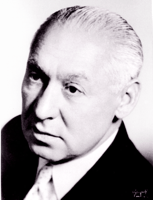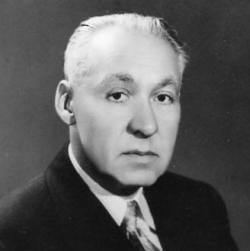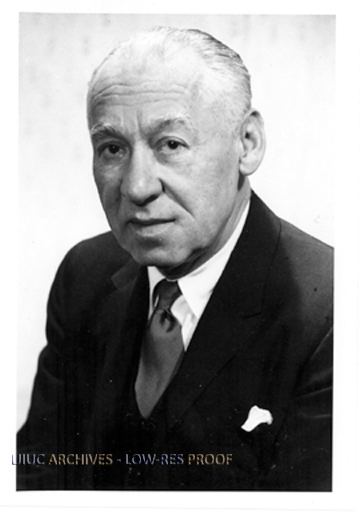Nationality Hungary | Name Ladislas Meduna Known for Schizophrenia | |
 | ||
Died October 31, 1964, Chicago, Illinois, United States Education Semmelweis University (1921) Books Oneirophrenia: The Confusional State Awards Guggenheim Fellowship for Natural Sciences, US & Canada | ||
Ladislas Joseph Meduna (27 March 1896 – 31 October 1964), the Hungarian psychiatrist and neuropathologist, chemically induced grand mal epileptic seizures as treatment for schizophrenia. It is the basis for modern convulsive therapy.

Biography

Meduna was born to a well-to-do family in Budapest, Hungary, in 1896. He studied medicine in Budapest from 1914 to 1921, his studies being interrupted by military service in the Italian front from 1915 to 1918.
He was appointed to the Hungarian Interacademic Institute for Brain Research, also in Budapest. He worked under the direction of Károly Schaffer. He studied the neuropathology of the structure and development of the pineal gland and of microglia, lead poisoning, and avitaminosis. In 1927 he moved to the Psychiatric Institute with Dr. Schaffer and began clinical and research work in psychopathology.
Meduna's interest in treating schizophrenia began with observations that the concentration of brain glia varied among patients who died with epilepsy (more glia than normal) and those with schizophrenia (less glia than normal). He thought that the inductions of seizures in patients with schizophrenia would increase the concentration of glia and relieve the illness. The concept was supported by reports that the incidence of epilepsy in hospitalized patients with schizophrenia was extremely low; and that a few schizophrenic patients who developed seizures after infection or head trauma, were relieved of their psychosis.
He sought ways to induce seizures in animals with chemicals; after trials with the alkaloids strychnine, thebaine, coramine, caffeine, and brucin, he settled on camphor dissolved in oil as effective and reliable. For a population with severe schizophrenia, he moved from Budapest to the psychiatric hospital at Lipotmező, outside Budapest. He began his dose-finding experiments on January 2, 1934. He was able to induce seizures in about 1/3 the first subjects. Nevertheless, three of the first 11 patients had a positive response, encouraging his work (see Gazdag et al., 2009). In his autobiography, he recalls the patient who began his treatment on January 23, 1934 in a severe 33-year-old catatonic patient. After just 5 treatments, catatonia and psychotic symptoms were abolished. Increasing his cases to 26 patients, Meduna achieved recovery in 10 and improvement in 3 more.
A major factor in Meduna's achievement was his selection of patients — 9 of the first 11 patients were catatonic. Catatonia is a syndrome that is remarkably responsive to induced seizures. The serendipity that catatonia was considered schizophrenia made his discovery possible.
Early in his work Meduna replaced camphor with pentylenetetrazol (Metrazol), an intravenous agent that induced seizures immediately compared with the long delay of 15 to 45 minutes after intramuscular camphor.
He first published his results in 1935 and then his major text in 1937. Die Konvulsionstherapie der Schizophrenie describes the results in 110 patients. Of these patients about half recovered. The results were much better for patients who were ill less than a year compared to those who had been ill for many years.
His results were quickly reproduced in many other centers around the world and this form of therapy became widely used and recognized as the first effective treatment for schizophrenia.(A parallel development was insulin coma therapy.) A more facile form of induction of seizures, using electricity instead of chemicals, was developed by the Italian psychiatrists Ugo Cerletti and Lucio Bini. They treated their first patient with ECT in May 1938 and by the mid-1940s, electricity had replaced Metrazole as the induction agent.
Meduna also developed carbon dioxide therapy. The patient breaths a gaseous mixture of 30% carbon dioxide and 70% oxygen, named carboxygen or carbogen, sometimes called "Meduna's Mixture". Designed to provoke a powerful feeling of suffocation, after only a few breaths the patient enters an unresponsive but intense altered state. The treatment — while usually unpleasant or even terrifying — proved very useful for revealing previously unconscious fears. Challenging experiences on carbogen prepared patients for later psychedelic therapy in a profound way. Although it was effective in relieving obsessive-compulsive disorder., it was not as effective as convulsive therapy, and it was abandoned.
With the increase of anti-semitism and the rise to power of National Socialism, Meduna emigrated to the USA in the following year (1938), to become Professor of Neurology at Loyola University, in Chicago. One of his last contributions to psychiatry was the study of confusional and dream-like states in psychoses (oneirophrenia) He was also a founder of the Journal of Neuropsychiatry and a President of the Society of Biological Psychiatry. After the war, he moved his research to the Illinois Psychiatric Institute, where he worked until his death in 1964.
